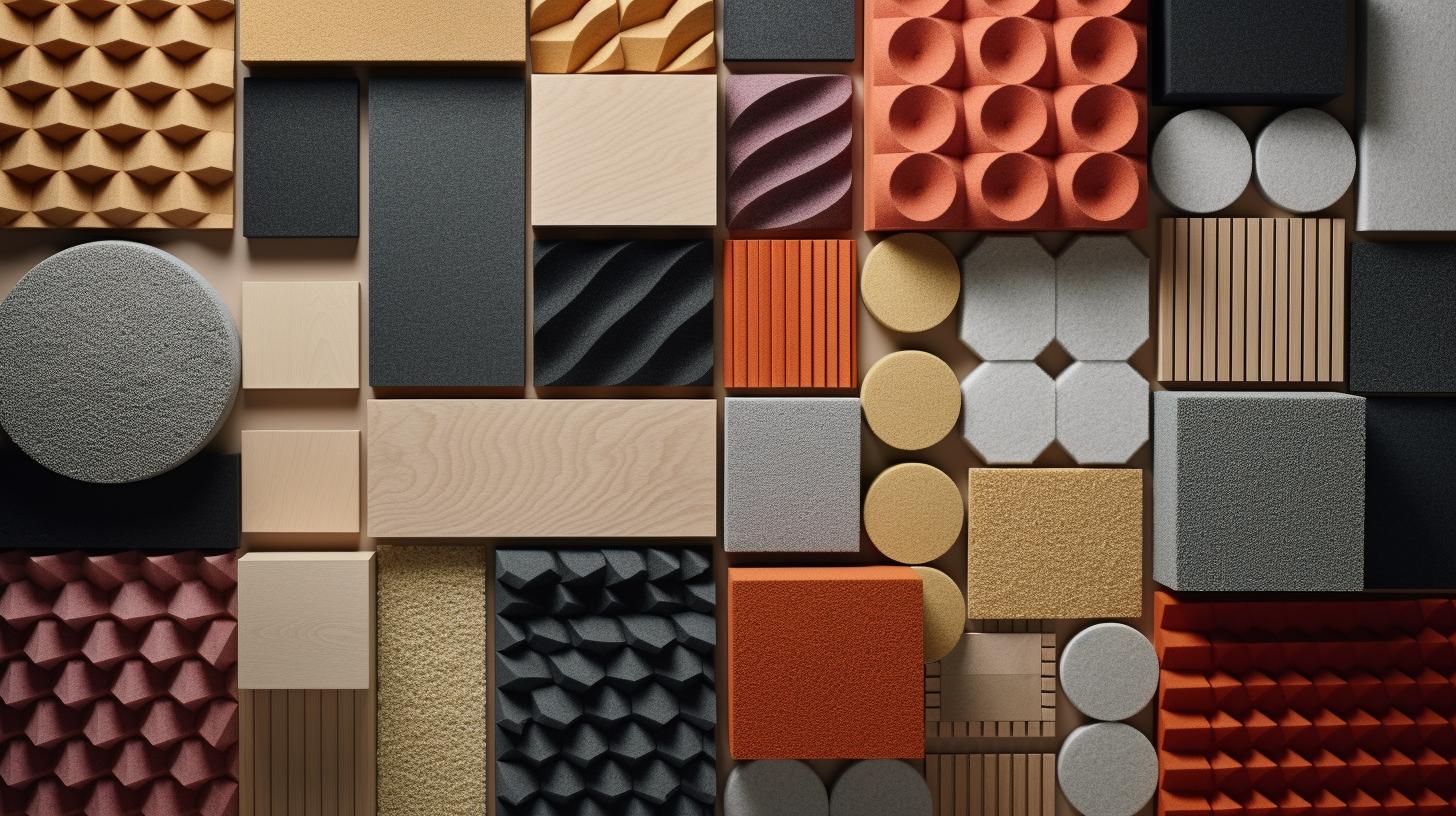Are you still using acoustic foam for soundproofing? You might be missing out on alternatives that are not only more effective but also safer and more versatile.
While acoustic foam has been a staple in soundproofing solutions for years, it’s not without its limitations. This blog post aims to shed light on the drawbacks of acoustic foam and introduce a range of alternative materials that offer improved acoustic performance, safety, and aesthetic appeal.
Ready to explore better options than acoustic foam? Let’s dive in and discover the perfect material for your next soundproofing project.
Why Is Acoustic Foam Commonly Used?

Acoustic foam is a type of porous material made from polyurethane foam or melamine foam. It is designed to absorb sound waves and reduce reverberations within a room.
This material has a distinct, sponge-like appearance, often with pyramid or wedge shapes that increase its surface area.
The increased surface area allows the foam to capture more sound waves, making it effective for specific sound control needs.
Commonly found in recording studios, home theaters, and soundproof booths, acoustic foam plays a critical role in controlling sound.
It minimizes echo and sound reflections, improving the quality of audio recordings or enhancing the listening experience.
However, it’s essential to recognize that acoustic foam is primarily effective at absorbing high-frequency sounds.
This makes it popular in settings where such frequency ranges are the focus, like vocal recording booths or podcasting studios.
Why Should You Consider Alternatives to Acoustic Foam?

While acoustic foam is a popular choice for many soundproofing projects, it’s not a one-size-fits-all solution. One of its most significant limitations is its lack of fire resistance.
Most acoustic foam products are not fireproof, posing a potential safety risk in specific settings.
This concern has led to increasing interest in fire-resistant alternatives, especially in public and commercial spaces where safety regulations are stringent.
Another limitation is that acoustic foam is particularly effective at absorbing high-frequency sounds.
While this makes it excellent for audio recording and podcasting, it’s less effective for broader sound control applications.
For example, it may not be the best choice for isolating low-frequency noises like machinery hum or traffic noise.
Understanding this limitation is crucial when looking for more versatile soundproofing options.
What Should You Look for in an Acoustic Material?

When considering alternatives to acoustic foam, multiple factors should influence your decision. Acoustic performance is undoubtedly at the top of the list.
The material you choose should effectively absorb or block the range of sound frequencies relevant to your needs.
This means looking beyond just the high-frequency capabilities offered by acoustic foam and considering materials that can handle a broader range.
Aesthetic appeal is another important factor. Acoustic treatment doesn’t have to be an eyesore.
Many modern acoustic materials come in a variety of colors, textures, and designs, allowing for greater flexibility in interior design.
Whether you’re outfitting a corporate office or a cozy home theater, there’s likely an acoustic material that complements your aesthetic vision.
Cost is a practical consideration that can’t be ignored. While it’s tempting to go for the cheapest option, remember that you often get what you pay for.
Lower-cost materials may not offer the soundproofing performance you need, leading to dissatisfaction in the long run.
On the other hand, premium materials might offer excellent performance but could be overkill for your specific needs.
Ease of installation is the final factor to consider. Some materials require professional installation, adding to the overall cost.
Others can be easily installed as a DIY project, saving money but requiring a time investment. Your choice will depend on your skill level, budget, and how quickly you need the project completed.
Polyester Acoustic Panels As An Alternative To Acoustic Foam
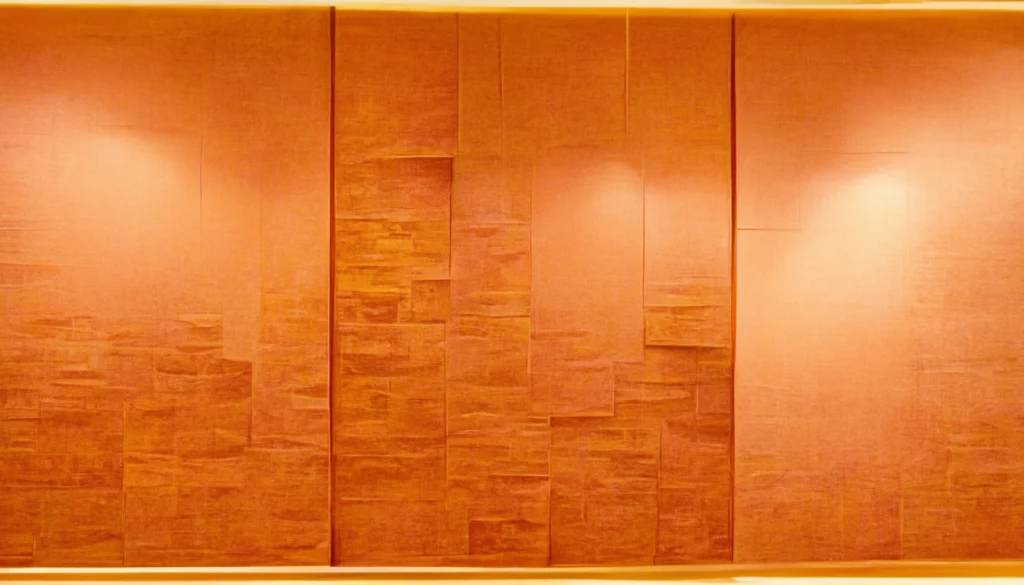
Polyester acoustic panels are an emerging alternative to traditional acoustic foam. They are made from 100% polyester fibers and come in a variety of thicknesses and sizes.
What sets these panels apart is their inherent fire-resistance, making them a safer option in environments where fire safety is a priority.
Polyester acoustic panels meet various fire safety standards, adding an extra layer of protection to your space.
In terms of acoustic performance, polyester acoustic panels are highly effective. They can absorb a wide range of sound frequencies, from low to high, making them a versatile choice for various applications.
This means they can be used not just in recording studios but also in offices, schools, and other public spaces where a broader range of sound frequencies need to be managed.
Aesthetically, polyester acoustic panels offer more flexibility than traditional acoustic foam. They come in a range of colors and can even be custom-printed with designs or logos.
This feature makes them a popular choice for businesses looking to maintain brand consistency while also improving their acoustic environment.
Moreover, polyester acoustic panels are generally easy to install. They often come with mounting hardware or can be adhered directly to the wall, making them a feasible DIY project for most people.
Mineral Wool Panels As An Alternative To Acoustic Foam
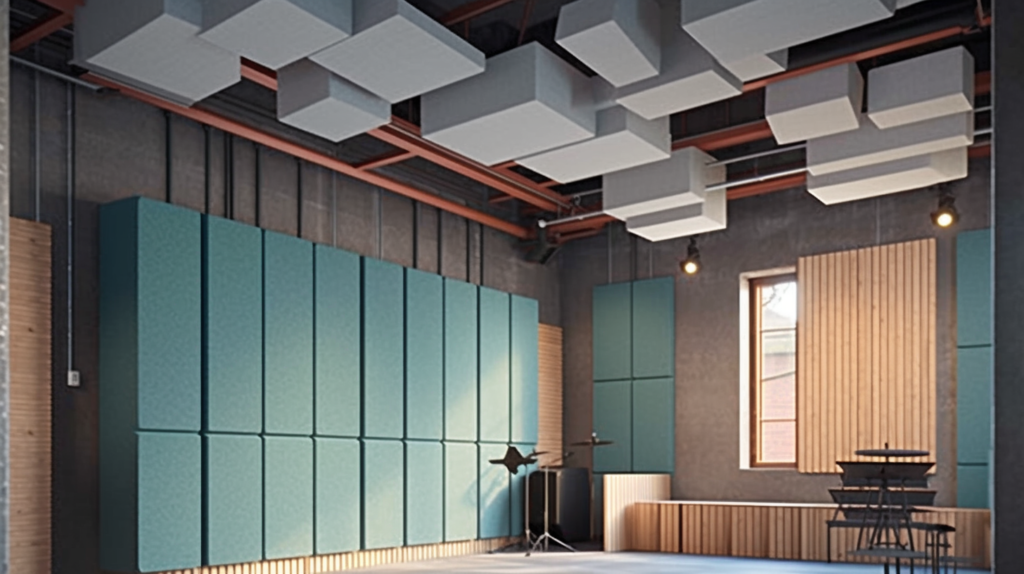
Another alternative to acoustic foam is mineral wool panels, made from spun mineral fibers such as basalt or slag wool.
These panels are highly dense, making them effective at absorbing low-frequency sounds. This is in contrast to acoustic foam, which is more efficient at high-frequency sound absorption.
Mineral wool panels are thus an excellent choice for environments where low-frequency noise like machinery hum or heavy traffic is an issue.
One of the significant advantages of mineral wool panels is their fire resistance. The mineral fibers used in these panels are naturally fire-resistant, often meeting stringent fire safety standards.
This makes them suitable for commercial settings where fire safety is a critical concern. However, one drawback is that mineral wool panels can be quite heavy and may require professional installation.
This could add to the overall cost of your acoustic treatment project.
Additionally, mineral wool panels are generally not as aesthetically versatile as some other options. They often come in standard colors like black or gray and have a more industrial appearance.
This might be acceptable in certain settings but could be a drawback if aesthetic appeal is a primary concern for your project.
Burton Acoustix’s Soundproofing Panels As An Alternative To Acoustic Foam
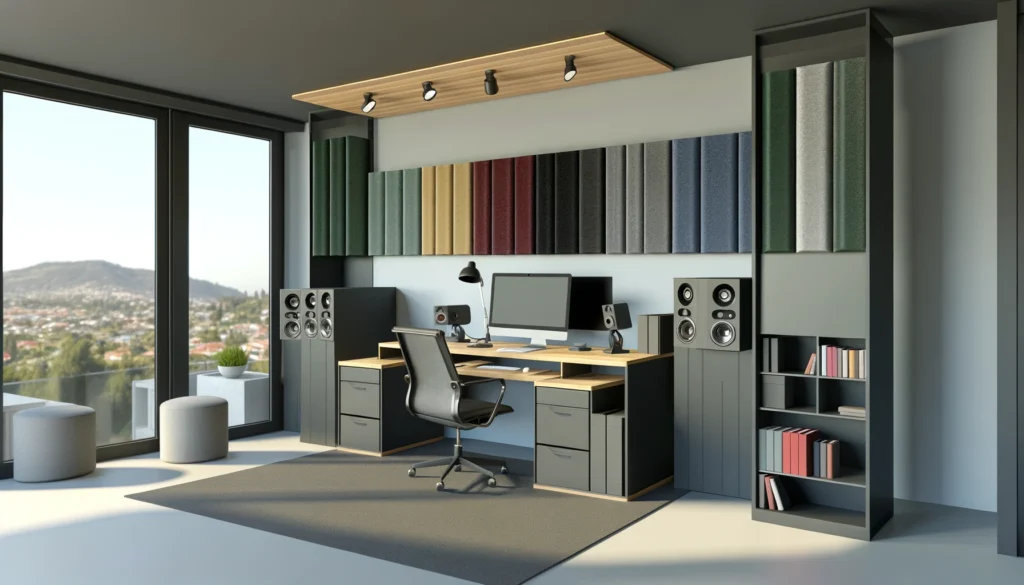
When it comes to effective soundproofing, Burton Acoustix offers panels made from high-density Nitril Butadiene rubber and textured felt.
These materials provide a unique combination of benefits, making these panels a standout choice for various applications.
One of the most notable features is their ability to deal with both airborne and structure-borne noises.
This makes them versatile and suitable for a wide range of environments, from homes to commercial spaces.
The high-density Nitril Butadiene rubber adds a layer of mass to the panels, making them highly effective at soundproofing.
This material can block out a wide range of frequencies, including those tricky low-frequency sounds that many other materials struggle with.
The textured felt, on the other hand, adds a layer of aesthetic appeal. It comes in various colors and styles, allowing you to customize the panels to fit your interior design.
Another advantage is the ease of installation. Burton Acoustix’s panels are designed for straightforward installation, making them accessible for both professionals and DIY enthusiasts.
The panels can be easily mounted on walls or ceilings, providing flexible placement options to meet your specific acoustic needs.
Fiberglass Panels As An Alternative To Acoustic Foam
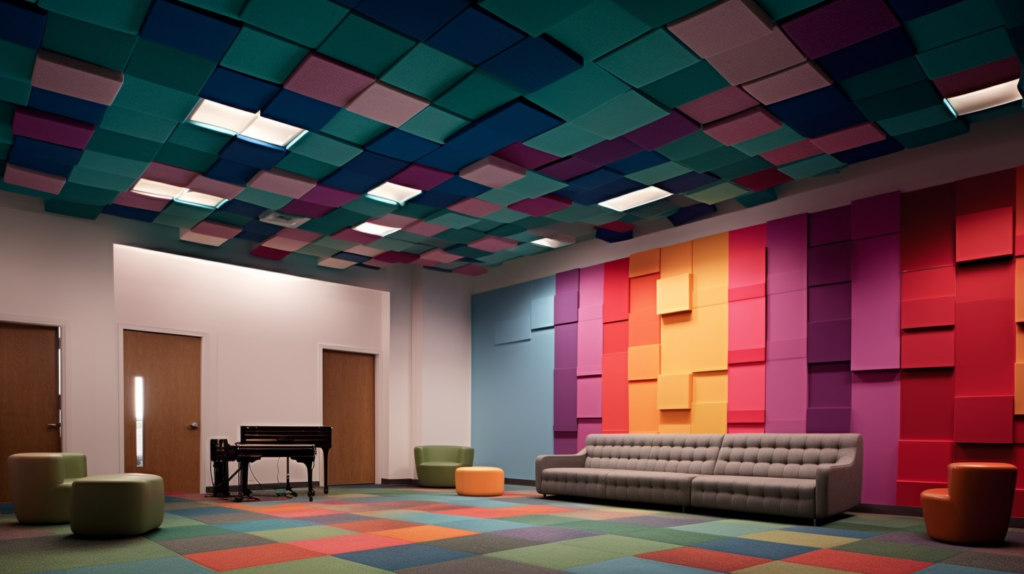
If you’re looking for an alternative that has excellent sound absorption qualities, fiberglass panels are worth considering.
Composed of fine glass fibers woven into a mat, these panels are known for their high NRC (Noise Reduction Coefficient) ratings.
They are particularly effective at absorbing sound across a wide range of frequencies, making them versatile for various applications.
From recording studios to industrial settings, fiberglass panels offer a level of sound control that is hard to beat.
However, it’s essential to note that fiberglass panels come with their own set of challenges. One of the most significant is the potential health risks during installation.
The fine glass fibers can irritate the skin, eyes, and respiratory system. Therefore, proper safety gear, including gloves, masks, and eye protection, is crucial during the installation process.
If you’re not comfortable taking these precautions, you may want to consider professional installation, which can add to the cost.
Wooden Acoustic Panels As An Alternative To Acoustic Foam
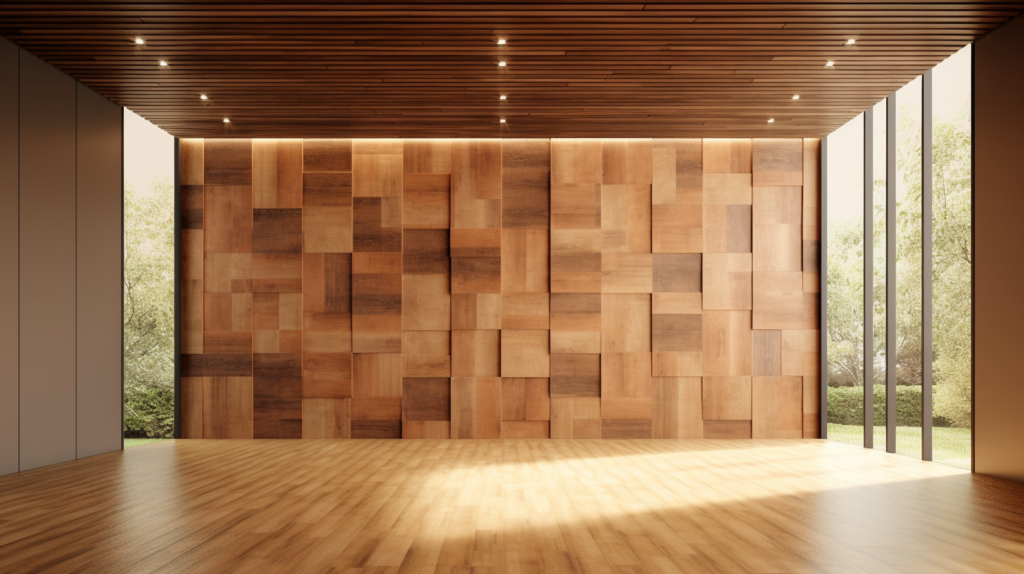
Wooden acoustic panels offer a unique blend of aesthetic appeal and moderate sound absorption.
These panels are typically made from perforated or grooved wood and come in various finishes, allowing for a high degree of customization.
They can add a warm, natural touch to any space, making them popular choices for restaurants, offices, and even home interiors.
Because of their aesthetic versatility, wooden acoustic panels are often used in settings where design is just as important as sound quality.
However, when it comes to pure acoustic performance, wooden panels generally fall short compared to other materials like polyester panels or mineral wool.
They are not as effective at absorbing sound, especially at lower frequencies. If you’re dealing with significant noise issues, wooden panels may not be the best choice.
They are better suited for spaces where the acoustic needs are moderate, and the focus is equally on aesthetics.
Fabric-Wrapped Acoustic Panels As An Alternative To Acoustic Foam

Fabric-wrapped panels are another versatile option for those looking to improve room acoustics. These panels usually consist of a fiberglass or foam core wrapped in fabric.
The fabric serves both aesthetic and functional purposes, allowing for customization while also contributing to sound absorption.
From a performance standpoint, fabric-wrapped panels offer good sound absorption across a variety of frequencies.
They are often used in offices, classrooms, and other spaces where both aesthetics and sound control are important.
However, one potential drawback to consider is fire resistance.
While some fabric-wrapped panels come with fire-resistant cores and fabrics, it’s essential to check the fire ratings if this is a concern for your application.
Another thing to consider is that while they offer good sound absorption, they may not be as effective at sound blocking as other materials like Burton Acoustix’s high-density panels.
Conclusion
Navigating the world of acoustic treatment can be a complex task, especially given the myriad of options available.
While acoustic foam has been the traditional go-to for many, this blog post has explored its limitations and presented a range of alternatives, each with its own set of advantages and drawbacks.
For those prioritizing fire safety and aesthetic flexibility, polyester acoustic panels emerge as a robust choice.
They offer excellent sound absorption across various frequencies and come with the added benefit of being fire-resistant.
Mineral wool panels excel in low-frequency sound absorption and are also fire-resistant, but may not offer the aesthetic versatility some seek.
Burton Acoustix’s soundproofing panels provide a unique blend of high acoustic performance, aesthetic appeal, and ease of installation, making them an excellent all-around choice.
Fiberglass panels and fabric-wrapped panels offer good sound absorption but come with their own sets of challenges, such as potential health risks during installation and varying degrees of fire resistance.
Wooden acoustic panels, on the other hand, are best suited for environments where aesthetics are just as important as moderate sound control.
In conclusion, the best acoustic material for your needs will depend on a variety of factors, including the types of sound you need to manage, the aesthetic you’re aiming for, your budget, and whether you’re planning a DIY project or seeking professional installation.
By carefully weighing these factors, you can make an informed decision that best suits your unique acoustic needs.
